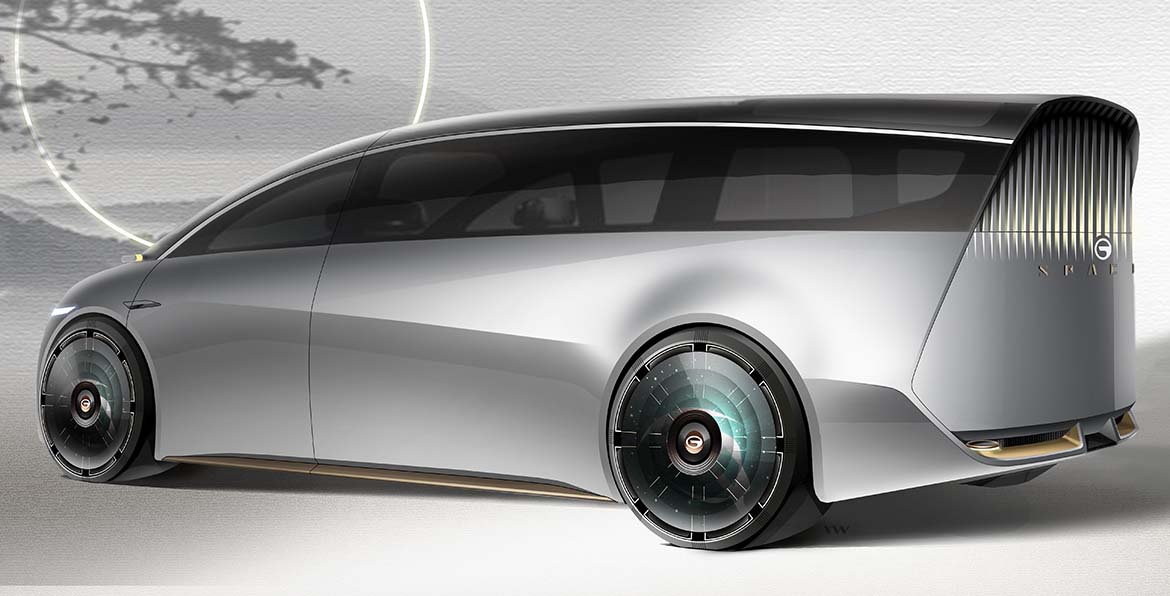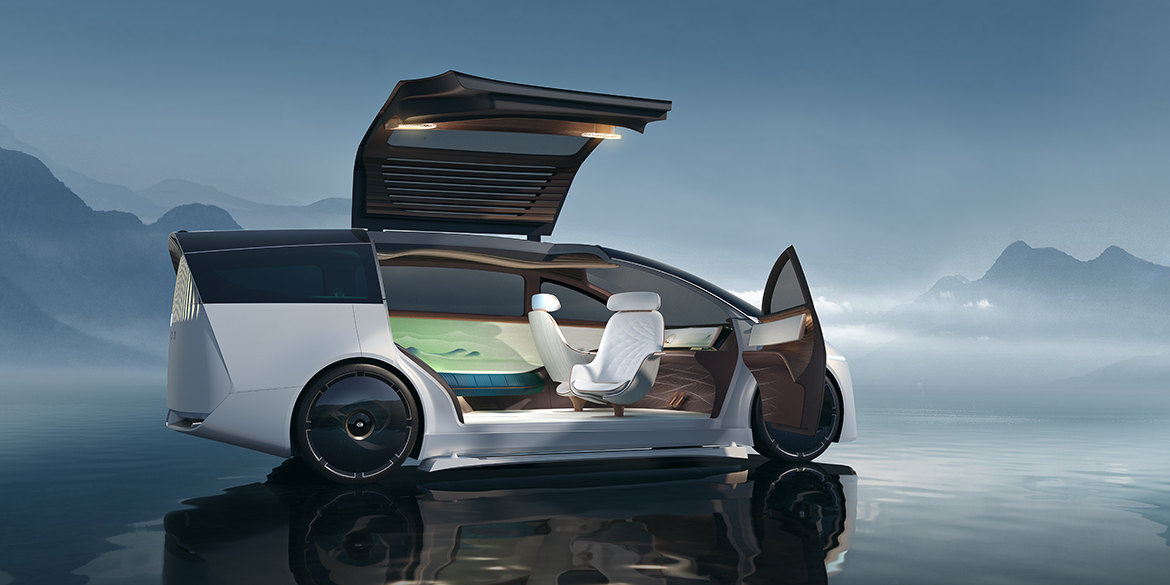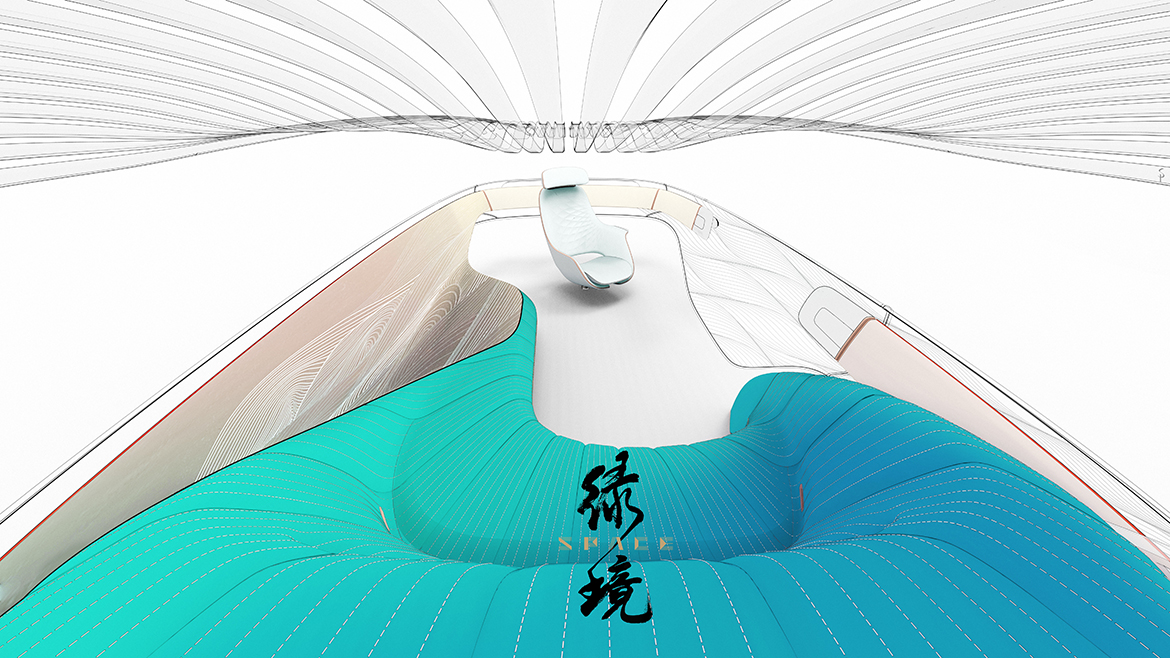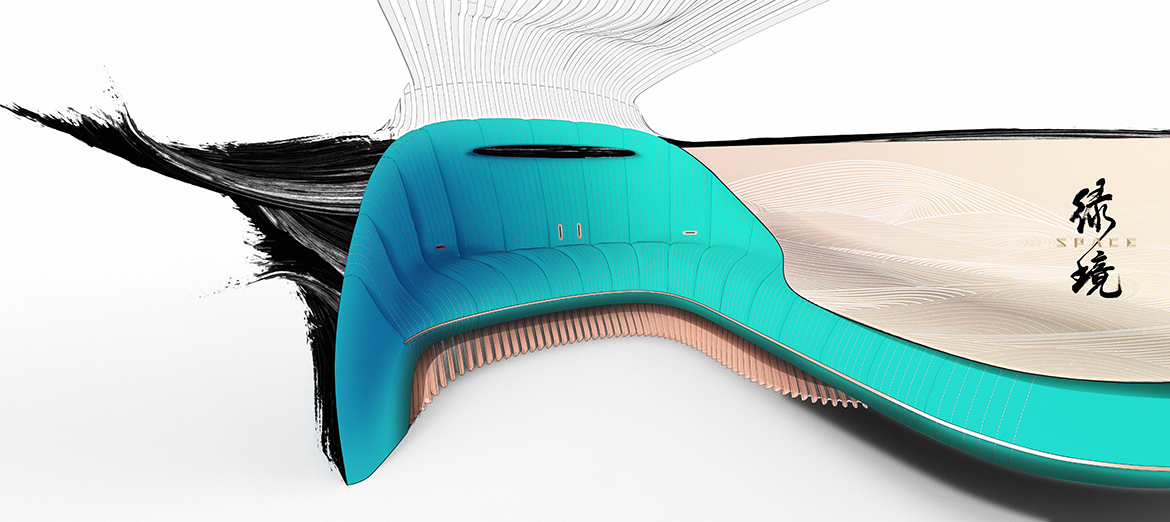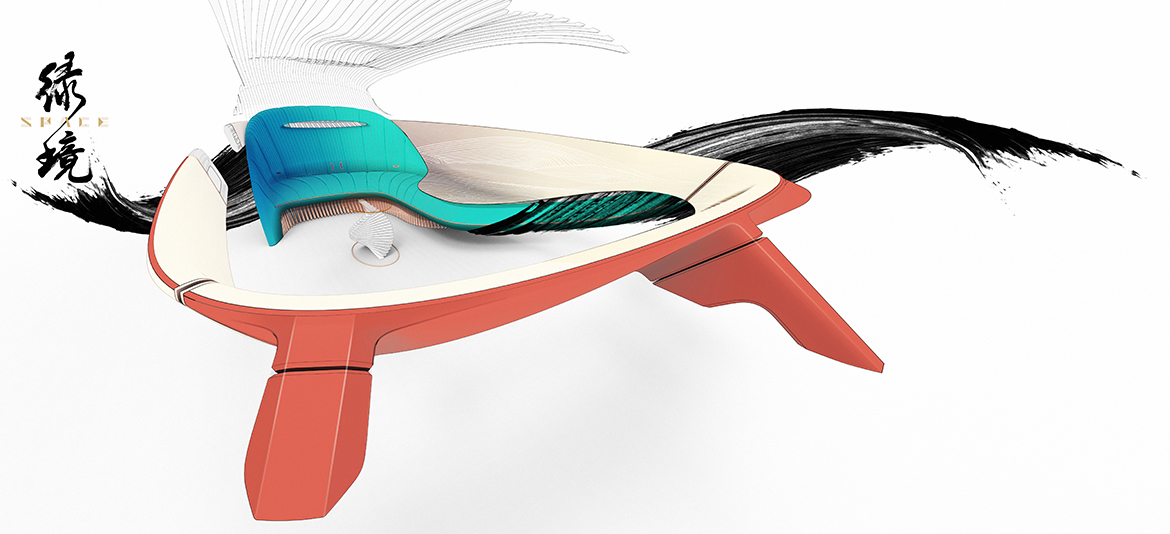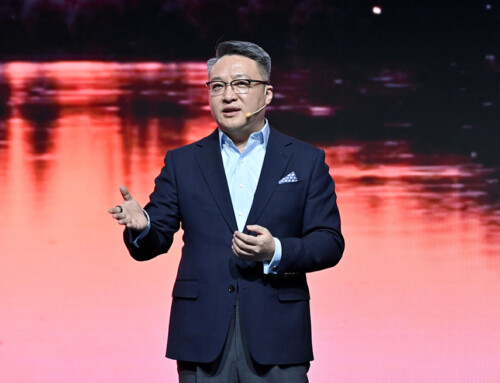Space is a hydrogen-powered concept car created to celebrate the 25th anniversary of the GAC group with a view to sustainable mobility, heritage preservation and a better life. The exterior design reflects the concept car’s intentions and is characterised by a very clean bodywork that blends powerful volumes at the front with a dynamic line at the rear. An execution that echoes the Time concept car unveiled in 2021 at last year’s Guangzhou Auto Show.
Space has an MPV architecture and features a spacious interior with an innovative L-shaped seating arrangement, reflecting the typical Chinese cultural image of the family gathering around the campfire. The hydrogen power unit created no problems for the designers in terms of space utilisation. “This aspect was not a real challenge for us: Space is an MPV that has plenty of space, both for people and for the powertrain,” says Fan Zhang, Vice President Design GAC.
“The real challenge was to further evolve the proportions of this type of people carrier. We wanted to show a futuristic and more integrated visual proportion, with a shorter front overhang, a sloping windscreen and a compact front profile. The rear overhang is rather long and the tail is slightly angled backwards: all this created a rather dynamic visual effect, while maintaining a strong sense of premium and majesty. Inside the elongated rear is the hydrogen tank. The retractable Tea Time Lounge is emblematic of the innovative use of the rear boot,’ Fan Zhang continues.
The Space features a clean, sculpted body surface with light and shadow. The front-end design is simple and elegant. Its sequential headlights, together with the illuminated vertical grille bars, create the effect of an ‘illuminated waterfall’, while the roof is inspired by inverted eaves, one of the most recognisable features of traditional Chinese architecture. This design maximises interior space and at the same time presents a fast and quick look. The wheel hubs feature an innovative light pattern: when the Space starts up, it appears as if undulating hills are contained within the wheel hubs.
When approaching the Space, the door opens automatically and a landscape of mountains and rivers is revealed, creating a special sense of ritual and connection between the user and the vehicle. While the keyword of the exterior is hi-tech, the interior is all about culture. The interior layout is inspired by an activity popular among ancient Chinese intellectuals: the ‘winding stream party’, in which participants sit beside a winding stream and compose poems. Entering Space, we find the landmarks of the city of Guangzhou: Baiyun Mountain and the Pearl River. Inspired by the famous Chinese painting ‘A panorama of rivers and mountains’ and based on the Lingnan culture, green was chosen as the main shade to give a strong Oriental cultural atmosphere and a sense of modern elegance.



